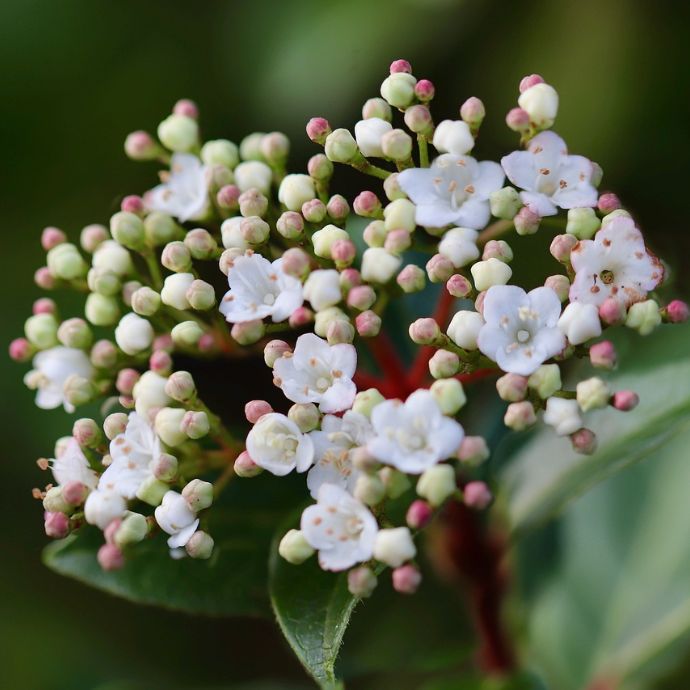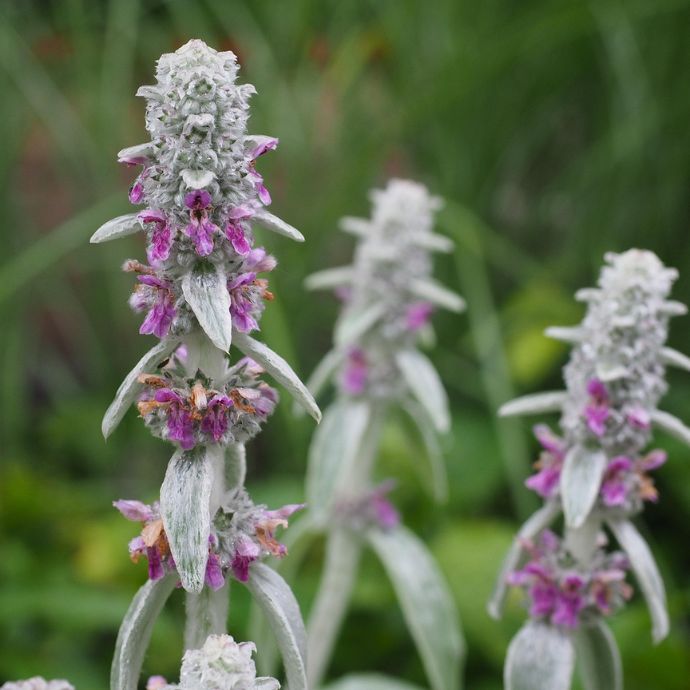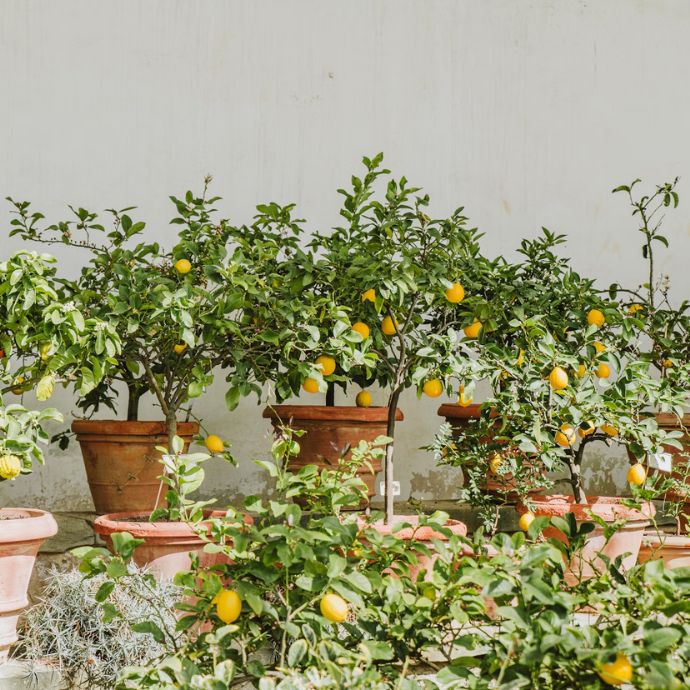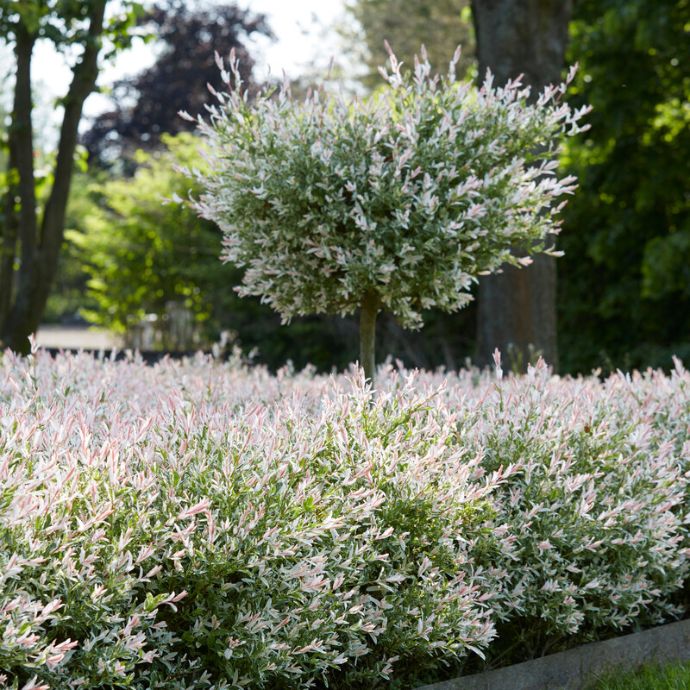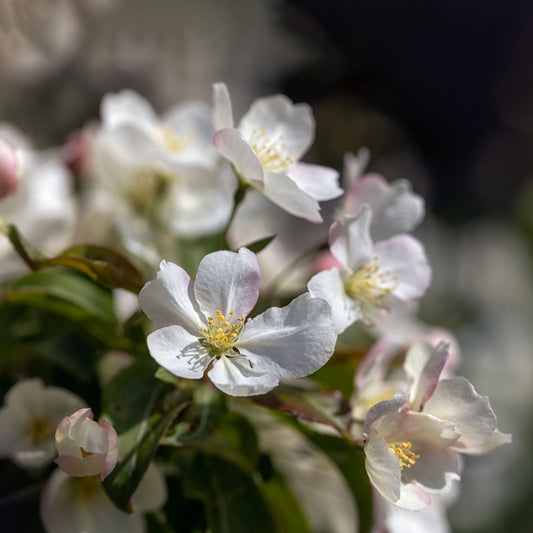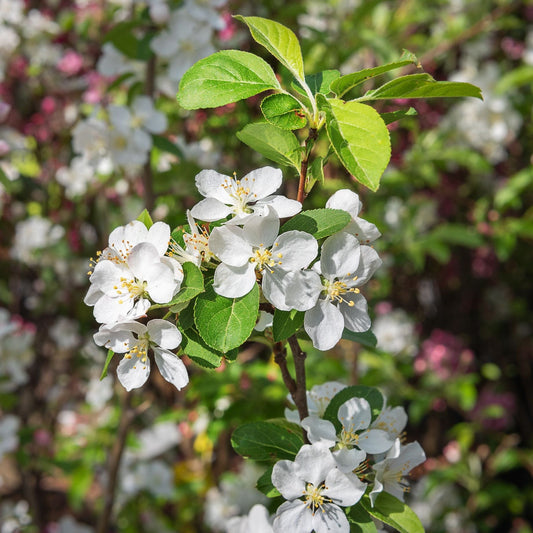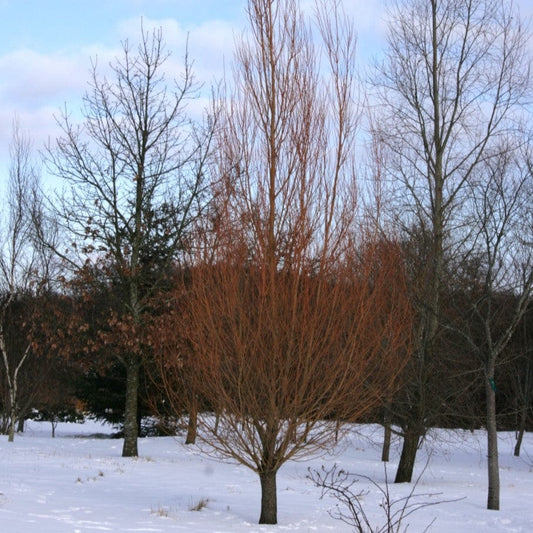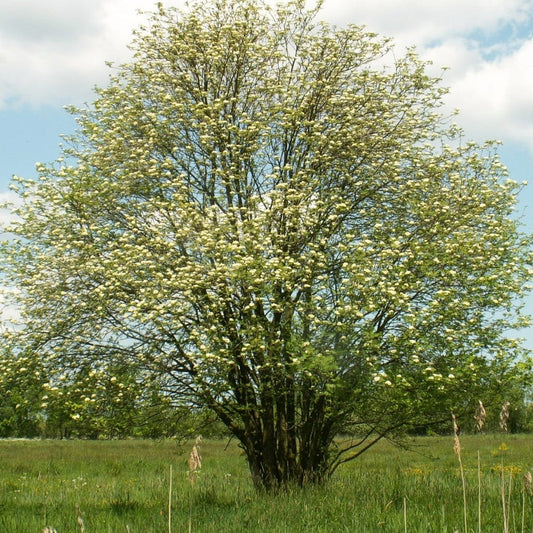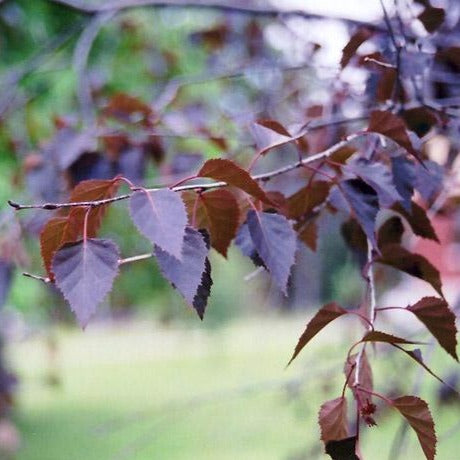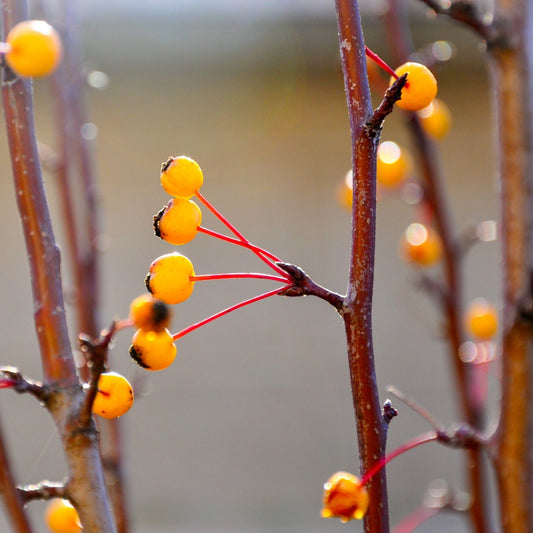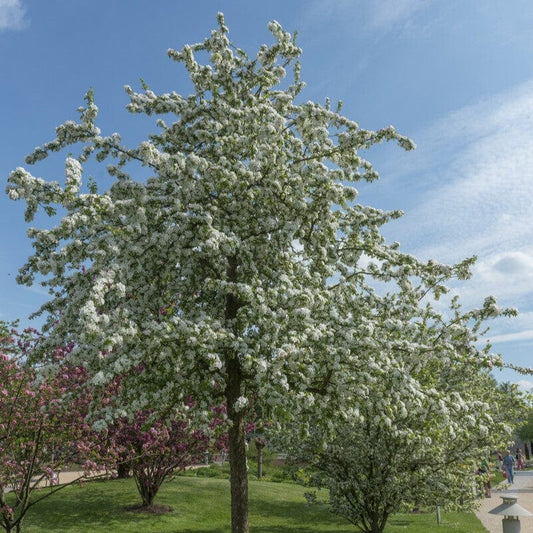Native Trees: The Best Choices for UK Wildlife
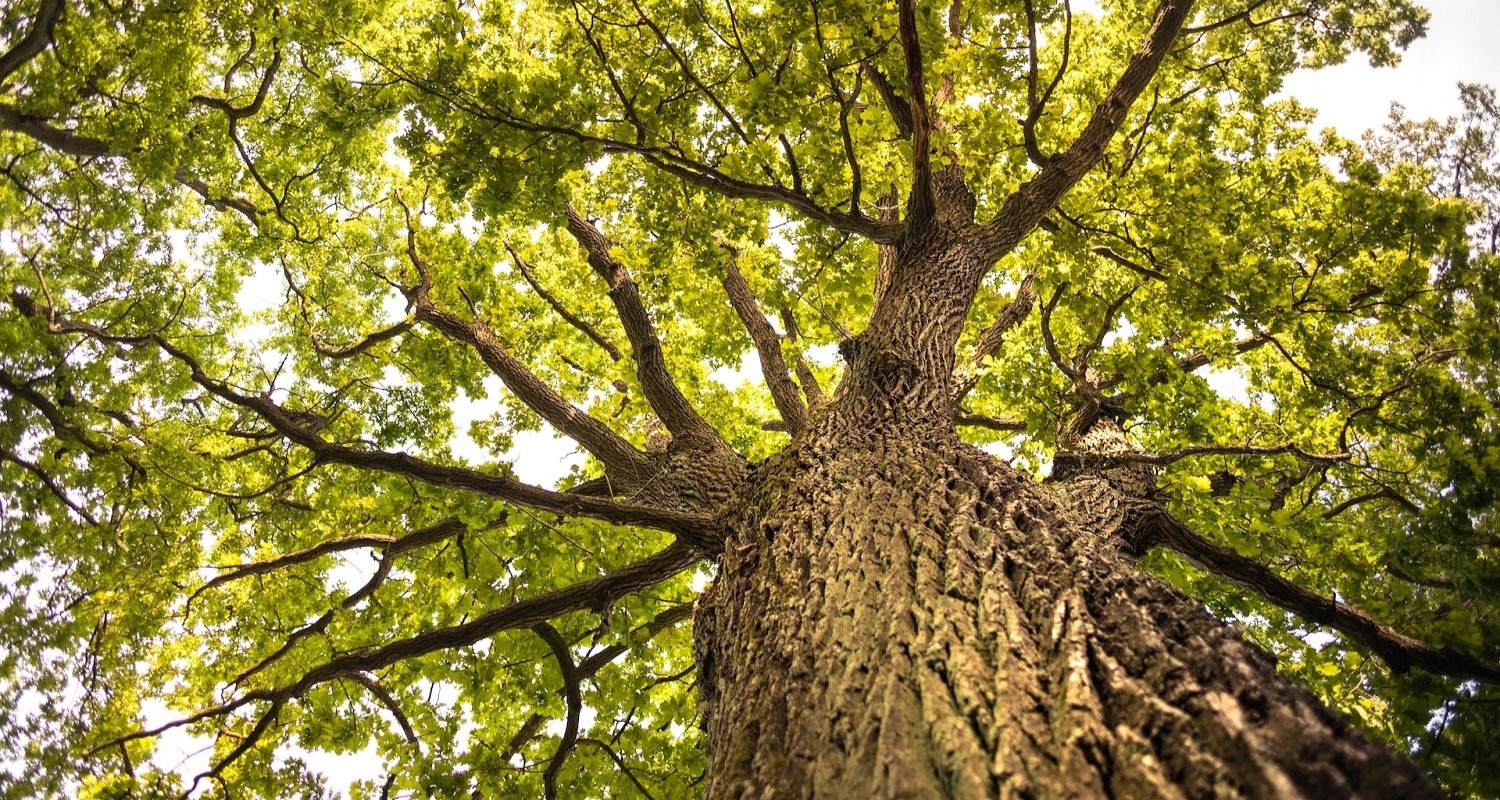
Jump to:
- What is a native tree?
- Native trees are low maintenance
- Native trees for wildlife
- Best for birds
- Best for bees
- Best for mammals
- Best overall
What is a native tree?
When we call a tree ‘native’ we mean that it’s a species that has existed in a country or a region for thousands of years - enough time for it to evolve alongside the wildlife that exists there and to adapt to the area’s natural climate and conditions. A UK native tree is one that has grown naturally in England, Scotland, Northern Ireland or Wales for this period of time.
Non-native trees are those which have been introduced by humans, such as Sweet Chestnut and Walnut, which are thought to have been brought by the Romans. These can still have huge benefits for wildlife as they came from broadly similar (if warmer) countries and have had centuries to acclimatise.
Native trees are low maintenance
Native trees are amongst the easiest trees to care for - why? Because they have evolved to deal with UK weather conditions and nothing phases them! They’re ideally suited to grow in the soils and altitudes of the British Isles, and have a better chance of success in colder and wetter parts of the country than many non-native species. Hundreds or even thousands of years of adaptation have also given these trees high resistance to our pests and diseases, meaning that typically, native trees are unbothered by these and tend to live longer.
Native trees for wildlife
Perhaps the biggest reason to plant native trees is their importance to wildlife. Animal, bird and insect species have co-evolved to feed on the trees they live with, adapting to the tree’s defences. They’re not equipped to feed on trees they haven’t encountered before - it would take them millennia to adapt! This is why you’ll always see more wildlife around native trees. As an example, an English Oak tree supports 284 different insect species, compared with a Larch or Sycamore originating from elsewhere in Europe which will support around 15. Planting a native tree might be the best thing you can do for your local environment - check this chart of the most common native trees to see which species you could be helping.
Native tree |
Animals supported |
|
Silver Birch |
Birds inc. woodpeckers Small mammals 229 insect species |
|
Crabapple |
Birds inc. blackbirds & thrushes Voles, foxes & badgers Over 90 insect species inc. bees Moth caterpillars |
|
Hawthorn |
Bees Birds inc. fieldfares & redwings Moths inc. brimstone & oak eggar 149 insect species |
|
Hazel |
Birds inc woodpeckers, nuthatches, jays & tits Small mammals inc. dormice, wood mice & red squirrels Butterflies inc. fritillaries |
|
English Oak |
Birds inc. blue tits, jays & nuthatches 31 mammals inc. badgers & bats 284 insect species inc. oak mining bees & the purple emperor butterfly |
|
Rowan |
Bees Birds inc. waxwings & song thrushes Small mammals inc. hedgehogs 28 insect species |
|
Willow |
Birds inc. woodpeckers & small nesting birds Mammals inc. squirrels, rabbits & deer Over 200 insect species inc. bees & moths |
(Numbers quoted are typically supported by a tree which has reached maturity.)
And it works both ways - the animals that your tree attracts will help you by acting as natural pest control for the rest of your plants. For example, ground beetles eat slugs and a family of bluetits can get through a tasty 100,000 aphids a year.
In addition to this, it’s well documented that being in nature and observing wildlife makes us feel more connected to the world around us and has measurable effects on our mental health and wellbeing.
The best wildlife trees
Best for birds
Rowan tree
Plant a Rowan tree or hedge and you’ll see a dramatic increase in the numbers of birds visiting your garden in autumn! That’s when the brightly coloured fruit ripens - it’s a particular favourite of blackbirds, mistle thrushes, redstarts, redwings, song thrushes, fieldfares and waxwings, who tend to favour the varieties with orange or red berries, such as Mountain Ash and Whitebeam. Depending on how fast the birds eat them, the berries can last right up until February.
Hawthorn tree
Hawthorn not only provides birds with an important food source in its bright red berries, but also a safe place to nest. It would be a brave predator that tried to tackle those thorny branches, which is why birds flock there - some species you might see include blackbirds, redwings, fieldfares, chaffinches, starlings and greenfinches. Hawthorns also attract pollinators with their abundant, nectar-rich blossom, as well as supporting over 300 insect species. They can be planted as single trees or as hedgerows.
Best for bees
Crabapple
Crabapple trees and hedges come into flower just as bees are most active in the spring, providing an essential foodsource to fuel those early pollinating missions. The long lasting, densely clustered blossoms are wildly attractive to species including bumblebees, mason bees and honey bees as well as butterflies and moths. Some of the best blossoms for pollinators are produced by the Red Sentinel, Pink Glow and Professor Sprenger varieties which have easily accessible single flowers. Crabapples are also an important food source for birds and small mammals including voles, dormice and squirrels - unless you decide to make them into crabapple jelly!
Willow
The Goat Willow (or Pussy Willow) is a favourite of bees due to its pollen-rich catkins. Willows are dioecious trees, meaning that male and female catkins appear on seperate trees, but both kinds are attractive to pollinators. Flowering in early spring, they’re a vital foodsource for bees just emerging from their winter dormancy as well as attracting moths including the sallow kitten, sallow clearwing, dusky clearwing and lunar hornet clearwing and the purple emperor butterfly.
Best for mammals
Hazel
Who wouldn’t want to eat hazelnuts (also known as cobnuts and filberts)? Fortunately these native nut trees are prolific croppers, so there’ll be enough for everyone. Probably the hazel’s number one fan is the hazel dormouse, which eats caterpillars from the leaves, then the nuts themselves when preparing for winter. Hazelnuts are also a favourite of most garden birds (including nuthatches as you’d expect) and mammals including squirrels and voles, while the catkins provide nectar and pollen for bees.

Silver Birch
Silver Birch trees and hedges support over three hundred species of insects, many fungi and birds including siskins, redpolls and greenfinches, while hole-nesting birds such as woodpeckers make their homes in the trunk. It’s the birch’s open canopy that encourages mammals to make their homes there, as it allows plenty of air and light for other plants to thrive beneath it. This gives animals including hedgehogs, squirrels and shrews the perfect place to shelter, forage and feed on seeds and insects.
Best overall
English Oak
An English Oak tree is its very own ecosystem, supporting more wildlife species than any other native tree or hedge. More than 284 species of insect alone depend on it, including the purple streak butterfly and the oak mining bee, which feed on its catkins. Birds that love to nest in its branches include rare wood warblers, pied flycatchers and redstarts as well as the more familiar blue tits and great tits. As your Oak matures, you may see bats roosting in the holes and crevices of the trunk, and the acorns provide food for birds like nuthatches, jays, rooks and woodpeckers and animals such as deer, squirrels and badgers. Even the fallen leaves, when they break down into leaf mould, support hundreds of insect and fungi species. We think it’s safe to say this may be the best tree you can plant for wild creatures - and certainly one of the best for watching them.
Last updated: 20/11/2023



